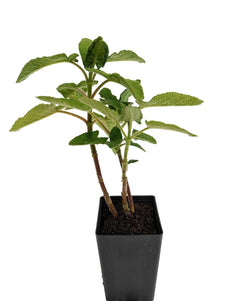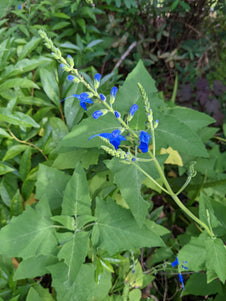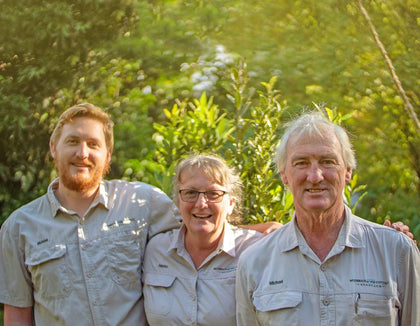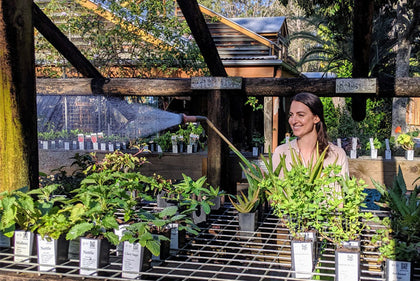







Salvia sagittata x macrophylla
Salvia sagittata x macrophylla

- In stock, ready to ship
- Inventory on the way

Usually available: All year
Life cycle: Perennial
Height: 1m
Position: Sun / part shade
Soil preference: Well drained
This is how we pack and send your Herb Plants to all states except TAS & WA
Botanical Name: Salvia sagittata X macrophylla
Salvia sagittata X macrophylla is a medium sized evergreen perennial that may reach up to 1 meter high and wide in warm regions. The height is extended when in flower by the tall floral spikes that stretch above the foliage. The branches are strong and wiry and the rich, green leaves are very large and arrow shaped. The plant has quite a lush tropical appearance, although the leaves still have the typical fuzz characteristic of many salvias. The 2 cm long tubular flowers are a rich iridescent cobalt blue and they hang delicately in the air on their tall thin, branching spikes, way above the aromatic foliage. The bracts are a bright green and serve to support the flowers but providing a brilliant contrast to the rich blue.
Salvia sagittata X macrophylla is known as ‘Blue Swing’ in the United States and was developed by gardening expert Betty Clebsch. It is said to have been arrived in Australia as seed and this has lead some experts to suggest it should be given a new name here. It may also be called ‘Big Leaf Sage’ because the arrow shaped leaves are quite huge. The parent plants are Salvia macrophylla (Tall Big Leaf Sage) and Salvia sagitatta (‘Arrow Leaf Sage’) both from the Andes Mountains regions of Peru, Chile and Ecuador where they grow at elevations of 1400 - 2400 meters. They are both tall and very large leafed plants, but the hybrid is unlikely to reach the same size, especially in garden conditions.
Salvia sagittata X macrophylla should do well in part shade to full sun, depending upon summer heat. This salvia loves water and should be provided with extra moisture in summer. Rich soil that is well drained will result in the best garden performance. Although this salvia is heat tolerant, the cold weather in some regions may present a problem as it does not tolerate frost or very low temperatures well. This may affect the growth and restrict size of the plant. It may layer or sucker as it grows, so this may need controlling or be useful as a means of propagation.
The salvia family has over 900 members with an extensive history as culinary, medicinal and ornamental plants. Ornamental salvias have become collectors items, as gardeners try to find a place in their garden for each and every one. There are salvias that will suit every type of soil and climate. More information on the Salvia genus and Common Sage (Salvia officinalis) may be found on our Common Sage page.
All information provided on this website is for informational purposes only. Please seek professional advice before commencing any treatment.





